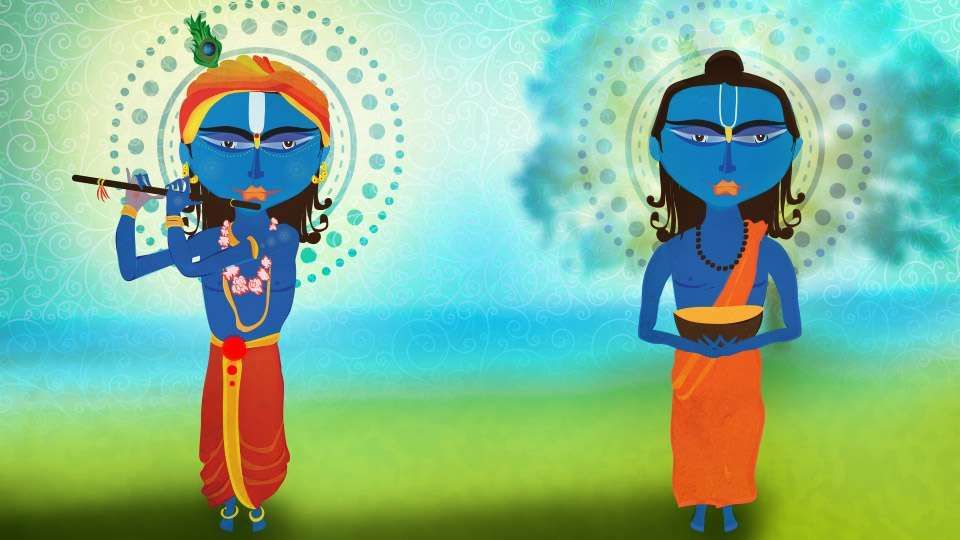The Glorious Beggar: Krishna as a Brahmachari
Sadhguru looks at a phase of Krishna’s life when he took up brahmacharya, after the death of Kamsa.

Read all the episodes in the "Krishna's Guru Dakshina" series.
Prologue || Part 1 || Part 2 || Part 3 || Epilogue
Sadhguru: At age 16, after beheading Kamsa, Krishna came to be regarded as a leader. Nevertheless, his Guru Gargacharya said to him, “Now, for what you are destined to be, you need education. You have everything else but you have to go through a certain discipline. Become the student of Sandipani.” And so Krishna did. When he was about to be initiated into brahmacharya, Balarama and a few other princes who had come with him laughed and said, “You have lived such a playful life, how can you become a brahmachari?” Krishna said, “In certain situations I did what I did. But I have always been a brahmachari. Now you will see I will take this vow and fulfill it absolutely.”For six years, Krishna lived as a brahmachari under the guidance and grace of Sandipani who trained him in various arts and other types of education. He learnt to use every kind of arms and developed particular expertise in discus throw. A discus is a metal disc that can be a deadly weapon if properly used. Krishna took it to a different dimension altogether.
During that time, Krishna went out on the streets begging for food like any other brahmachari. When you go out begging, you don’t choose your food. Whether the food that they put in your bowl is good or rotten or whichever way, you simply eat it with devotion. A brahmachari should never look at the nature of the food being served to him. He shouldn’t make choices about what to eat, what not to eat. When you say you are a brahmachari, you are on the path of the Divine. Food is needed, but your nourishment is not in food alone.
So, Krishna became a perfect brahmachari. Krishna, who had always been well-dressed with a diadem, peacock feathers and silk clothes, was suddenly in just a strip of deerskin, 100% dedicated to his new sadhana. Never before the world had witnessed a more glorious beggar. People were amazed, just looking at his beauty, his way of being, with how much grace, dedication, and focus he walked the streets for a little food that he had to gather for the day. He could have chosen to become an emperor anytime, but he went on the streets begging, for six years of his life.
Krishna Dvaipayana
There was another equally beautiful brahmachari, named Krishna Dvaipayana. Krishna Dvaipayana, who later on came to be known as Vyasa, became a brahmachari at the age of six.
On the first day of his brahmacharya, this little boy with a shaven head and clothes made of wood bark went out to beg for food, saying “biksham dehi” in his childish piping voice. When people saw this cute little boy, they gave him an enormous amount of food, the best things that they could give because they recognized his strength, how he was walking the streets alone, begging food for himself and his Guru. He got more than he could carry. As he walked on, he saw many children on the street who had not eaten well, as he could tell by looking at their faces. So he gave away all the food and came back with an empty bowl.
Parashara, his Guru and father, looked at him and asked, “What happened? You did not beg? Or did nobody give you anything?” Krishna Dvaipayana said, “They gave me food. But I saw these little children who had not eaten, so I gave away all the food.” Parashara looked at him and said, “Fine.” That meant no food for them.
This went on day after day. The boy never ate. When Parashara saw this six-year-old going for three, four days without food and still continuing all his duties and study, he realized the tremendous possibility in this boy and poured himself out to him. What he would have taught somebody else in 100 years, he poured out to him in a very short time.
Leela
Many traditions and systems have devised many ways to open up a human being for a higher possibility. Brahmacharya is one way. Leela is a different way. Leela is about using everything to be seduced out of your body, out of your mind, out of everything that you consider as “myself.” Whether you chant, dance, eat, sing, or whatever you do, simply give yourself and surrender to it. You must be feminine.
The very nature of the feminine is to surrender, to merge, to receive. The moon has no quality of its own. It is just reflecting the sun – and see how beautiful it has become. If the moon did something of its own, it wouldn’t be like that. The sun is life-giving and sustaining – that’s different. But in terms of opening you up to something ethereal, in terms of inspiring some poetry or love in you, the moon is playing a much bigger role than the sun, isn’t it so? Because it has no quality of its own – it is just reflecting.
If you want to know the Divine, the only way is that you have no quality of your own. You just become a reflection. If you become a reflection, what will you reflect? Only the Ultimate.
Read all the episodes in the "Krishna's Guru Dakshina" series.
Prologue || Part 1 || Part 2 || Part 3 || Epilogue
Subscribe



